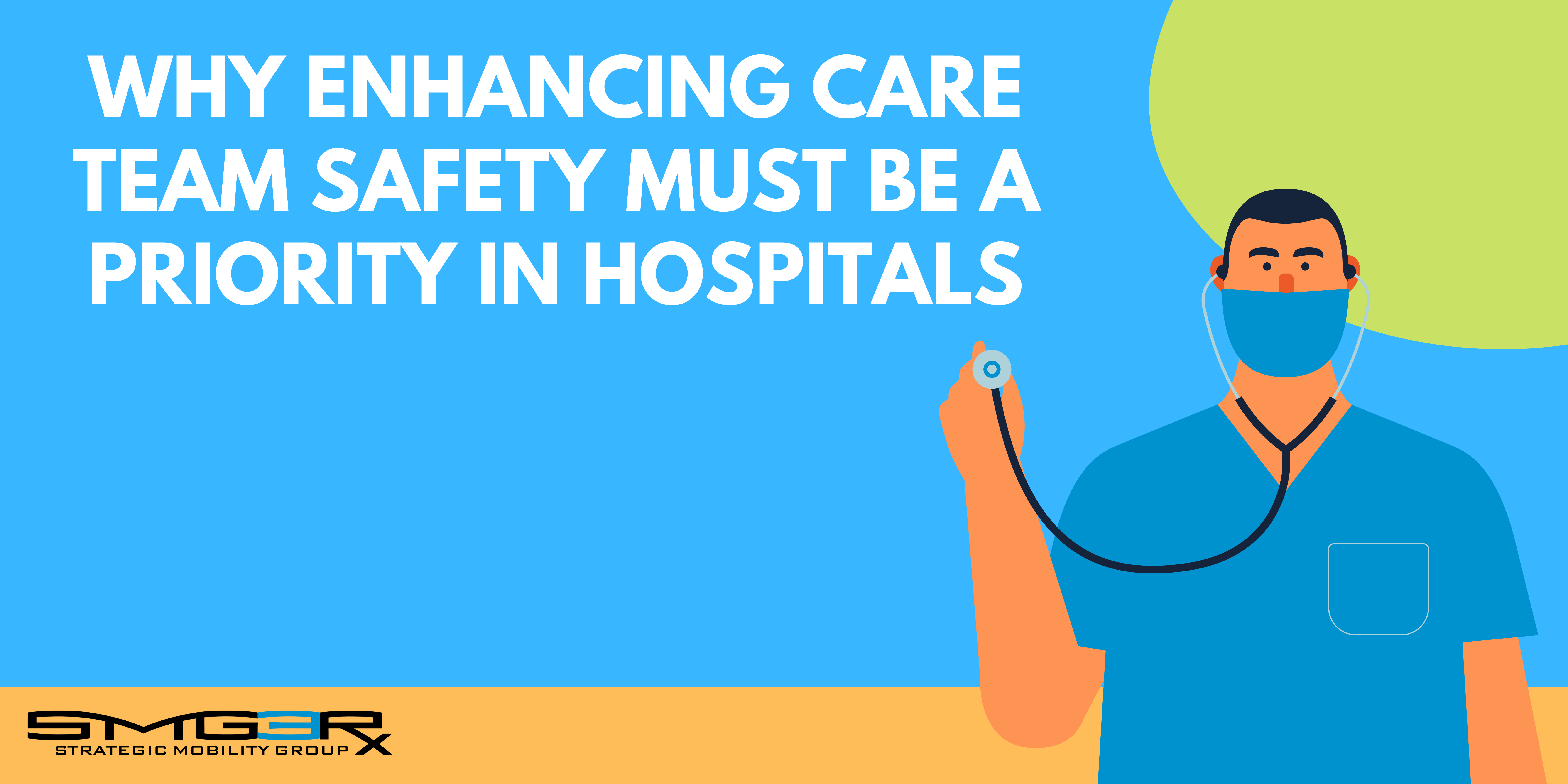Infection and pathogens aren’t the only safety concerns healthcare teams face today. Instances of patient violence, verbal abuse, accidents, and injuries also pose a threat to caregivers, and as hospitals operate with more straining demands, stress levels are only set to increase.
According to a recent study by the American Nurses Association 25% of nurses have reported being physically assaulted while on the job. Meanwhile, OSHA found that more than 50% of registered nurses and nursing students have faced verbal abuse. Furthermore, the CDC reports that nurses are often a target of workplace violence–more so than any other category of healthcare workers.
Staffing shortages have also led to increased stress and overwork; nurses named both of these issues as top health concerns in a recent American Nurses Association Survey. When nurses are burnt-out or must work shifts that are short-staffed, there is a higher risk of accidents and injuries when assisting patients. As a result, clinical smartphones have also been adapted to promote better staff safety.
3 Ways to Increase Care Team Safety
- Secure communication channels for facilitated collaboration.
The right communication and collaboration tools can help nurses deliver better quality care to patients while mitigating on-the-job risks. For example, purpose-built smartphones with geo-location technology can help managers track and monitor staff, manage scheduling, and quickly send backup to assist nurses when additional help is needed. In addition, mobile technology that integrates with critical systems–including nurse call systems, electronic health records (EHR), and workflow applications–help clinicians save time, eliminate errors, and make more informed decisions at the point of care.
The National Database of Nursing Quality surveyed 315,000 RNs in 888 US hospitals to identify improvements to healthcare work environments. The study revealed a clear driver of success: effective teamwork between nursing leadership and staff at the care-unit level. In addition, the study found that care teams achieve the best results when leaders create a work environment where nurses can easily access the essential resources, tools, and services they need to be successful.
- Maximize staff support and education.
Beyond improving team communication and collaboration, healthcare organizations will need to empower clinicians in new ways to enhance their skills, knowledge, and confidence on the job. For example, mobile phones can become a vehicle for secure, on-demand learning and other virtual tools that can be accessed at a patient’s bedside. Having these resources at a nurse’s fingertips can help caregivers alleviate patient fears and frustrations, while clarifying care needs and instructions.
Not only do these support tools promote better healing and more successful outcomes for the patient but empowering the caregiver to maintain more control over high-anxiety situations can also improve clinician confidence and safety. Healthcare organizations can also use mobile devices to provide training and educational resources for caregivers to enhance their clinical skills and knowledge.
- Implement Safety-Driven Technology.
Creating a safer work environment comes down to implementing reliable safety measures and technologies to protect clinical caregivers if they are in a dangerous situation. For example, advanced mobile solutions are equipped with safety features like an easy-to-activate duress button that instantly connects the user with security professionals.
In addition, real-time location tracking and activity sensors can alert team leaders to potential problems. For example, a phone with an integrated accelerometer can detect if a nurse is running or not moving, which could indicate that he/she is in danger. These capabilities can be integrated into existing systems and emergency protocols to ensure timely and effective responses to dangerous situations.
As we cross into the post-pandemic landscape, ensuring staff safety will continue to be a necessity to preserve overall quality care. Contact SMG3Rx to discover how you can take the next steps in securing staff safety.



